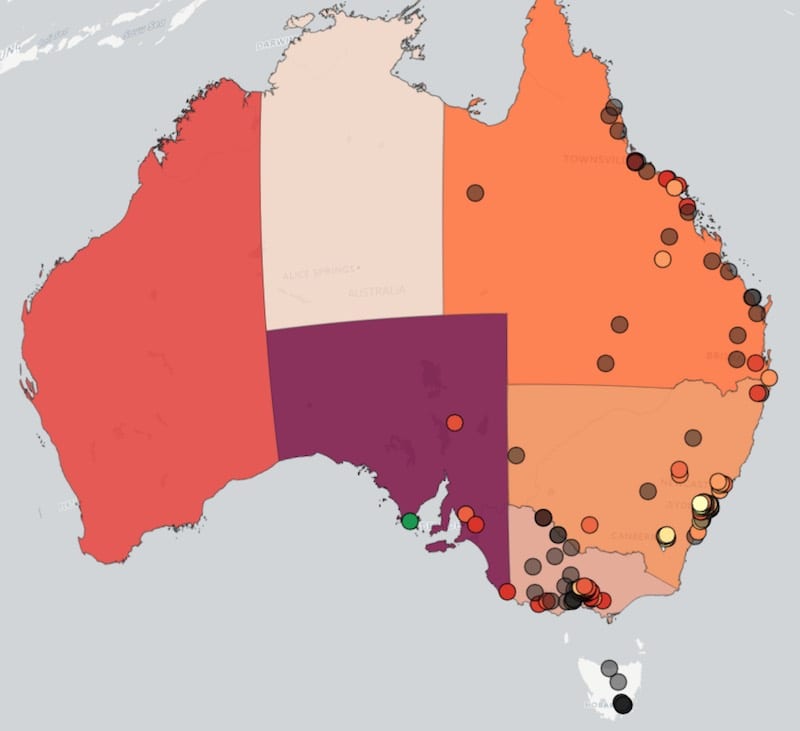How do you transform a fossil fuel centred “hub-and-spoke” electricity network into a decentralised, renewables-based smart grid?
As AEMO and the members of the newly formed Energy Security Board know only too well, it’s no easy task. But the launch of an interactive mapping program this week aims to help pave the way.
The Network Opportunity Maps provide detailed information aimed at encouraging the strategic development of local renewable energy, battery storage and smart demand management in a decarbonising Australian electricity grid.
The launch marks the culmination of three years of collaborative work from the Institute of Sustainable Futures (at UTS) and Energy Networks Australia – a massive project that was co-funded by the Australian Renewable Energy Agency and the NSW government, and backed by industry partners Ergon Energy, AusNet Services, Powerlink, ElectraNet and Transgrid.
The Maps include the latest network investment and load forecast data and indicate how much new generation, including solar and wind farms, can be connected in each area – a service that is expected to be hugely valuable to both industry incumbents and newcomers alike.
“This is where the sharing economy meets the electricity sector,” said ISF Research Director Chris Dunstan.
Indeed, Dunstan likens the platform to Google Maps, which acted as a precursor for disruptive industry players like Uber to come along and change the way we view vehicle ownership and transport services.
“You couldn’t really have done Uber, without the information that was provided by Google Maps,” Dunstan told RE on Wednesday.
“(Network Opportunity Maps) will make it easier for people to understand where the emerging opportunities on the grid are, and that’s important.”
Likewise, he adds, it will identify areas of emerging constraint in the grid such as areas where businesses and residential customers are using their own energy resources, like solar, batteries, and smart energy management to support the network and be rewarded for it.
“It’s basically (a service for) the whole range of decentralised clean energy providers,” Dunstan says; “from those interested in demand management, to networks seeking non-network solutions to grid upgrades, to those interested in local generation and energy storage.”
Dunstan also notes that it will help to level the playing field in the electricity sector, which has long been dominated by a small number of gen-tailers, who have operated according to a regulatory system that has been less than transparent, and has not encouraged competition.
“(The Maps) will fit in between helping networks, and facilitating low-cost access to the markets,” he said. “Accessible transparent information will play a crucial role.”
One part of this crucial role will be keeping the networks honest – particularly in light of a history of network “gold-plating,” or over-spending on expensive poles and wires and other infrastructure, and then charging costs back to consumers.
As ARENA boss Ivor Frischknecht notes, projects like this one, as well as the forthcoming Demand Management Incentive Scheme, and ARENA’s three-year demand response trial projects, will ultimately benefit consumers.
“These initiatives should lead to creative solutions to reduce network costs and improve grid reliability,” he said, in comments on Tuesday.
And the Energy Networks – who, of course, have played a key role in the development of the maps – are also keen to use the platform build a smarter and more reliable grid.
In particular, said ENA interim CEO Andew Dillon, it is about “enabling alignment of customer assets to avoid spending more on poles and wires in the future.”
The Network Opportunity Maps are now available on the Australian Renewable Energy Mapping Infrastructure (AREMI) site here. A webinar briefing on the maps will be conducted on Thursday November 02, 2017, from 2.30-4:00pm. Register HERE.











